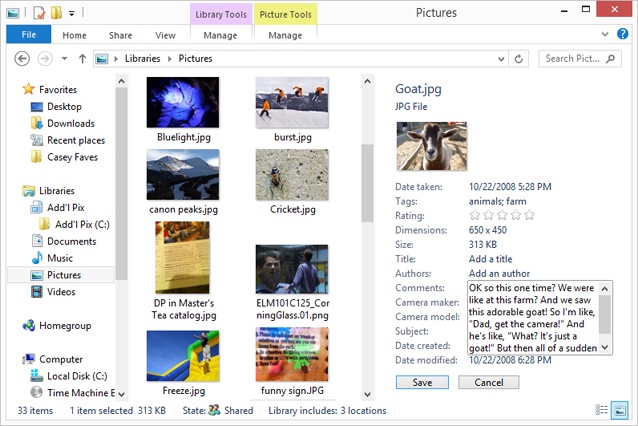Tags, Metadata, and Properties
See all that information in the Details pane—Date, Size, Title, and so on? It’s known by geeks as metadata (Greek for “data about data”).
Different kinds of files provide different sorts of details. For a document, for example, you might see Authors, Comments, Title, Categories, Status, and so on. For an MP3 music file, you get Artists, Albums, Genre, Year, and so on. For a photo, you get Date Taken, Title, Author, and so on.
Oddly (and usefully) enough, you can actually edit some of this stuff (Figure 6-16).

Figure 6-16. Click the information you want to change; if a text-editing box appears, you’ve hit pay dirt. Type away, and then press Enter (or click the Save button at the bottom of the dialog box). To input a list (of tags or authors, for example), type a semicolon (;) after each one.
Some of the metadata is off limits. For example, you can’t edit the Date Created or Date Modified info. (Sorry, defense attorneys of the world.) But you can edit the star ratings for music or pictures. Click the third star to give a song a 3, for example.
Most usefully of all, you can edit the Tags box for almost any kind of icon. A tag is just a keyword. It can be anything you want: McDuffy Proposal, Old Junk, Back Me Up—anything. Later, you’ll be able to round up everything on your computer with a certain tag, all in a single window, even though they physically reside ...
Get Windows 8.1: The Missing Manual now with the O’Reilly learning platform.
O’Reilly members experience books, live events, courses curated by job role, and more from O’Reilly and nearly 200 top publishers.

